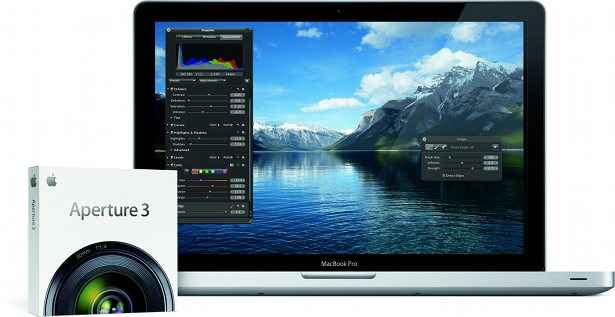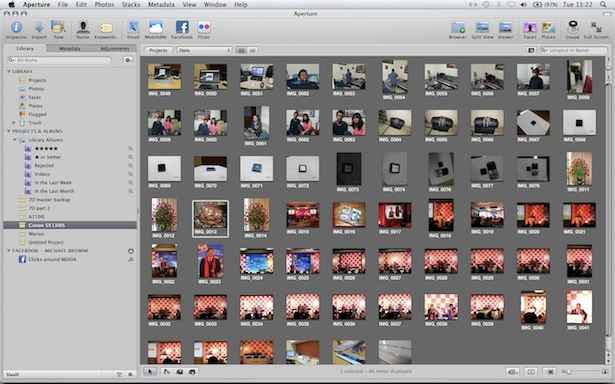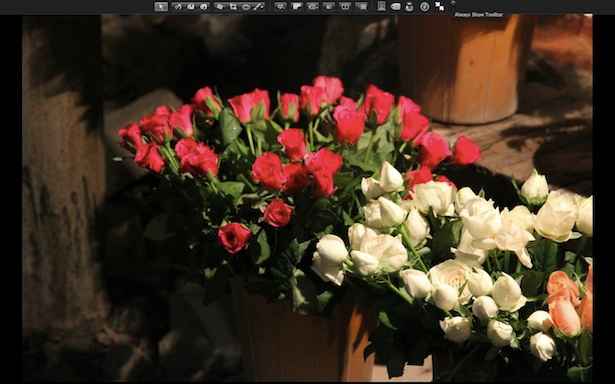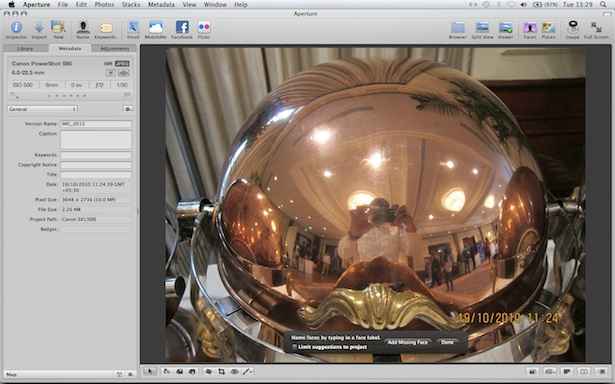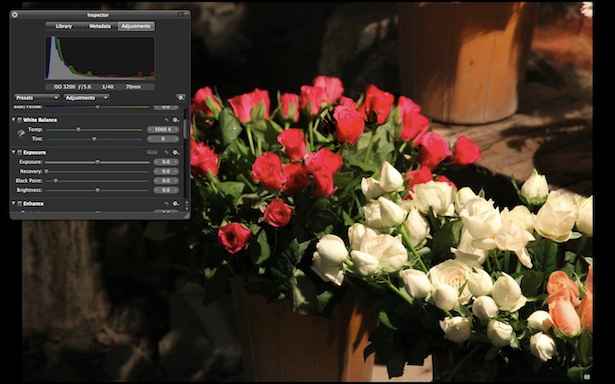Aperture 3 � Newer and better, but there�s room for improvement Review
At Rs. 11,000, Aperture 3.0 is not cheap. Especially for audiences who thrive on free software. A lot of these features are also available in free packages. However, the interface and the ease of use has been bumped up, and newer touches like brushes and a proper curves tool make it pretty powerful at image manipulation. Image archival and management is a strong point, as well as online image sharing thanks to good social network integration. A good package for photographers looking for an affordable package on the OS X platform.
However, Aperture has a problem, it has a difficult fence to straddle. On one hand, it competes with free applications and Apple’s own iPhoto that is pretty adept at organisation of photos. On the other, it must tackle the similar Lightroom (that is lighter on system resources) and the behemoth Photoshop, which obliterates it in terms of options and advanced editing features. It’s not easy being a middleman!
Features and what’s new: Image management
Exporting your current iPhone library into Aperture 3.0 is painless. Hook up a camera or a loaded memory card reader and Aperture can be set to automatically run, giving you the option to export images into a new project, or a current project. You can choose to disregard duplicates.
[RELATED_ARTICLE]At the very outset, Aperture 3.0 is loaded with new features over its predecessor (Aperture 2.0). Note the options on the top left for email, MobileMe, Facebook and Flickr – yes Aperture 3.0 can directly load images to Facebook and Flickr, after a login. Though remember than deleting your images from the Aperture library also deletes them on Facebook – pretty annoying! Tagging people in images is also easy, via the “Name” tab, however, Faces still works sporadically, unless you’re willing to go through the boring task of training it. At times, it’s super accurate, at others, it’s frustratingly not so.
Click next to read more on Aperture 3
The Metadata information now looks like an LCD display on a camera, displaying ISO settings, F-rating, shutter speed, current lens focal length in a nice graphical manner. Creating albums from projects is also very simple. Browsing through these projects/albums is also easier than before; you can view images individually, as a split view or as array of tiles.
Working in full screen mode is nice, there’s more workspace, which is always fun, and thanks to the complete menu available in a sleek dock at the top, there’s no need to toggle between full screen and windowed mode. When using a slider to tweak and image, if you hold the shift key, the entire palette disappears, leaving only the slider and of course the image. Not only does this look neat, it’s also super handy if you’re working on a 100 per cent crop and need to see exactly what effect the tweak is having.
[RELATED_ARTICLE]There is a load of adjustments available, under Photos -> Add Adjustment. When using presets under the Adjustments pane, a small, superimposed pane gives you a preview of the effect of the highlighted setting. Quick adjustments are also available, as are preset custom brushes. And this is one of the new features of Aperture 3.0 – brushes. These are available from the quick menu under the image as well. From the usual blur, sharpen, contrast, saturation there are options like skin smoothing, polarisation, halo and noise reduction among others. Brushes are important for they allow region-specific adjustments in an image, instead of an image wide adjustment. You use a brush the same way as you’d use a paintbrush. Feather and eraser brushes are available too. The size of the brush is easily controlled via a slider, and if you’re using a mouse, the mouse-wheel will do the job. A chromatic aberration filter is another new, and much needed inclusion.
The curves tool is also a lot more flexible, allowing more accurate adjustments and arbitrary points. This allows finer adjustments, so you can, for example, bump up shadows in a scene, while expanding the highlight range, something that was previously impossible with the limited control points in Aperture 2.0. You can therefore add a lot of appeal to even the dullest of shots and used in conjunction with brushes, colour can be injected into a particular part of an image, or a portion lacking contrast can be given a bit more, even shadows can be enhanced or toned down.
RAW processing is another goodie, and Aperture 3.0 is touted to be better than Aperture 2.0 at high ISO images, which is pretty important, since one of the reasons you would shoot in raw is be able to minimise noise and grain while maintaining image sharpness through manipulation software. Aperture does a fairly good job, managing to suppress noise, but not at the expense losing sharpness.
“Places” from iPhoto has also been incorporated into Aperture 3.0 and geo tagging pretty easy. This feature is especially useful if you’re trying to recall the name of a shop or street that you visited a while back. GPS data from an entire trip can be loaded even from a .gpx file.
Click next to read up on performance, and our final take
Performance
Aperture 3.0 is not a resource hog. Other than the rather long 10-second start-up time, it’s actually pretty snappy. Whether it’s because of the native 64-bit support or memory optimisations, I cannot tell, but Aperture 3.0 will work fine on any Mac with a 2 GHz dual core and at least 2 GB of RAM. In fact, moving from 2 to 4 GB hardly sees an improvement of 15 per cent or so. I’ve never encountered crashes, but that may have been because I started using it just a couple of days before the stability enhancing 3.1 patch was released.
Conclusion
[RELATED_ARTICLE]Available at an MRP of Rs. 11,000, or an upgrade price of Rs. 5,700, Aperture 3.0 is not cheap. A 30-day downloadable trial is available (http://www.apple.com/in/aperture/trial/) to evaluate its usefulness. It’s a fairly good piece of software, that delivers a lot more than its predecessor, with many useful little bits that while individually aren’t much, collectively optimise workflow. Brushes as a feature, is a genius inclusion, and adds a much needed deeper layer of flexibility to the image editing process. The Curves tool is another big addition, allowing fine-grained control over effects like shadows, highlights and such. As an image editing software Aperture 3.0 is a complete product, though it’s still a lot lighter on features than Photoshop and a bit lighter than Lightroom. However, Photoshop costs a lot, and if you have a license, you likely won’t bother reading this.
If you’re a casual user, you’ll probably use something like GIMP for image manipulation, newbie’s will find iPhoto good enough, but for photographers using Mac systems, Aperture 3.0 is definitely worth checking out, especially given its pretty flawless, intuitive interface.
System requirements: Mac OSX 10.5, 10.6; 2 GHz dual core; 2 GB RAM;
Ratings:
Features: 7
Performance: 8
Interface: 8
Value: 5.5
Overall: 7
Contact: Apple India


Email: indiasales@mac.com

Phone: 080-2574-4646

Website: http://www.apple.com/aperture/
Price: Rs. 11,000 (MRP)

